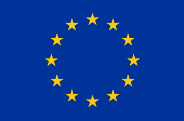
Safe non-food consumer Products in the EU and China
A conformity assessment is the process which a manufacturer should follow to demonstrate that their product complies with all applicable legislation.
Conformity assessment is a process with six steps:
The process is by and large the same for all products, but there may be differences depending on the product type, which can be seen in the applicable legislation for specific products. As an example, it is mandatory for some product categories to involve a test laboratory in the conformity assessment (testing and/or production control).
Pre-production risk management is a systematic assessment of all the risks that may be posed by hazards in the product to verify that they have been reduced to an acceptable level.
The aim of pre-production risk management is to check that products are safe in order to prevent injury to customers. Pre-production risk management will show where manufacturers where they should focus their tests, which may even help to save money on laboratory testing.
The manufacturer needs to compile technical documentation to be able to demonstrate that a product is safe and compliant. Technical documentation should contain the following:
It is recommended that the manufacturer also includes a clear and well-structured table of contents to provide an easy overview of the documentation. The documents must be in one of the official EU languages. User instructions must always be in the language spoken in the country where the product is sold.
The technical documentation must be stored for ten years in such a way that the manufacturer on request can send it to a European market surveillance authority within ten days. The documents can be stored on a computer or on paper, whichever is preferable. The technical documentation can be stored anywhere and does not need to be stored in the EU.
The EU declaration of conformity is required for all CE-marked products and it is illegal to sell such products on the EU market without a proper EU declaration of conformity. The declaration must be stored in the EU and should include:

This website was created and maintained with the financial support of the European Union. Its contents are the sole responsibility of SPEAC project and do not necessarily reflect the views of the European Union.